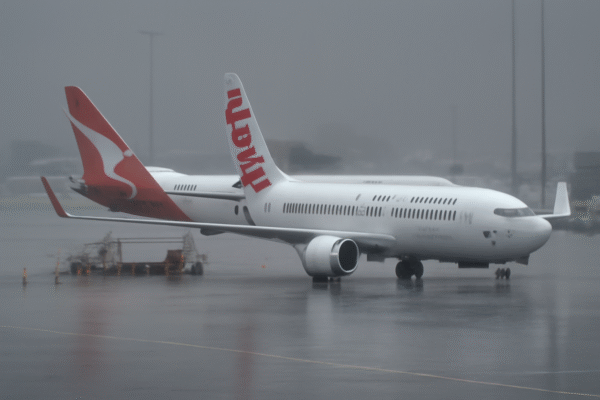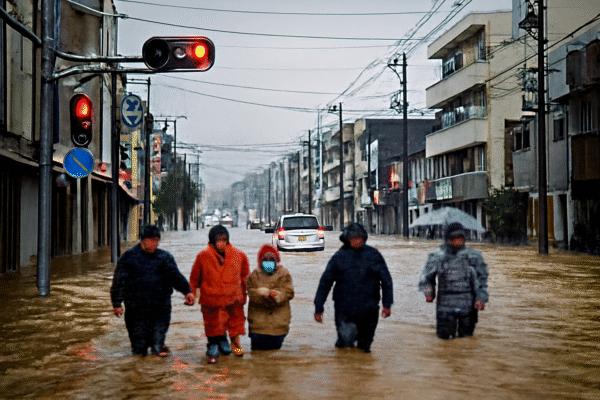In a recent turn of events, severe weather conditions have wreaked havoc at major airports across Australia, causing widespread flight cancellations and delays. Travelers flying through Sydney and Melbourne airports have faced significant disruptions, with a total of 19 cancellations and over 300 flight delays reported. Airlines including Qantas, Virgin Australia, Jetstar, Malaysia Airlines, and Korean Air have all been affected by the adverse weather, which has been marked by heavy rainfall, strong winds, and poor visibility.
As Australia’s two busiest airports, Sydney and Melbourne have become hotbeds for travel turmoil. The weather conditions have led to grounding flights, both domestic and international, causing significant headaches for passengers and airlines alike. With the inclement weather expected to persist, travelers are left uncertain about when they can expect to reach their destinations.
Sydney Airport: 172 Flights Delayed, 10 Cancellations
Sydney Airport, a major international hub, was one of the hardest hit by the severe weather. Throughout the day, 172 flights were delayed, with both domestic services and international routes suffering disruptions. In particular, U.S.-bound flights were heavily impacted, adding to the frustrations of international travelers.
Among the airlines affected, Qantas and Jetstar saw the highest number of cancellations. Qantas had 4 flights canceled, accounting for 1% of its scheduled flights, while Jetstar experienced 4 cancellations, which made up 2% of its planned services. Virgin Australia was similarly affected, with 2 flights canceled and 43 flights delayed. The airline saw the highest percentage of delays among the major carriers, with 26% of its scheduled services being impacted.
In addition to domestic disruptions, international airlines were not spared. Air New Zealand, which had 46% of its flights delayed, had the highest rate of delays among international carriers. Other airlines such as China Eastern Airlines, Cathay Pacific, and Hong Kong Airlines also faced challenges, with many experiencing substantial delays. Sichuan Airlines, in particular, had a 100% delay rate for its scheduled flights.
Melbourne Airport: 170 Delays and 9 Cancellations
Similar to Sydney, Melbourne’s Tullamarine Airport also faced a challenging day due to the severe weather. With 170 flights delayed, the disruption was widespread, affecting both domestic and international routes. Although U.S.-related flights were largely unaffected, the majority of cancellations and delays involved other international and domestic routes.
Qantas, once again, felt the brunt of the weather. The airline experienced 7 cancellations and 58 delays, affecting 3% of its flights. Jetstar also faced considerable disruptions, with 41 delayed flights, or 30% of its scheduled services. Virgin Australia’s schedule was similarly impacted, with 38 of its flights delayed, comprising 23% of its planned departures.
International carriers operating at Melbourne Airport were not immune to the weather conditions either. Airlines such as Fiji Airways and Garuda Indonesia suffered delays, while Turkish Airlines reported an alarming 200% increase in delays. LATAM Peru also saw 100% delays for its scheduled flights, highlighting how far-reaching the disruptions have been.
Travelers Struggling with Cancellations and Delays
For travelers, the experience of severe weather disruptions has been nothing short of frustrating. Many passengers have found themselves stranded or facing hours of delay, as airlines scramble to manage the unprecedented weather conditions. International travelers, in particular, have faced difficulties as many global carriers struggled to maintain their schedules.
For those still traveling, experts advise staying up to date with flight status and checking airlines’ mobile apps or websites regularly for updates. Additionally, passengers should arrive early at the airport to allow for extra time to navigate potential delays and heightened security measures.
In the event of a cancellation, travelers are encouraged to contact their airline as soon as possible to discuss rebooking options or alternative travel arrangements. While the bad weather is expected to persist for the next few days, staying flexible and monitoring flight statuses can help travelers minimize the disruptions they experience.
Looking Ahead: Proactive Measures and Travel Recovery
The forecast indicates that the severe weather is not going to let up anytime soon. This means that travelers should remain prepared for ongoing disruptions in the coming days. Although major airlines like Qantas, Jetstar, and Virgin Australia are expected to continue facing difficulties, international travelers should also anticipate delays and cancellations. Monitoring flight statuses and checking for updates will be critical to minimizing inconvenience.
As the weather continues to impact global flight schedules, passengers must stay informed and flexible with their travel plans. Some airlines have seen delays as high as 100%, and while airlines will make efforts to resume normal operations, it is vital to be adaptable. Keeping in touch with airlines and remaining vigilant about updates can help passengers adjust their travel arrangements as needed.
Recommendations for Travelers Facing Flight Disruptions
- Stay Updated: Regularly check your flight status via your airline’s website or mobile app.
- Allow Extra Time: Arrive at the airport early to account for potential delays or extra security checks.
- Contact Your Airline: In case of cancellations, reach out immediately to inquire about rebooking or alternative travel plans.
- Monitor the Weather: Keep an eye on weather updates, as continuing severe weather is expected to impact travel for the next few days.
- Flexibility is Key: Adjust your plans as necessary, as weather disruptions can change quickly.
In conclusion, severe weather in Australia has caused major disruptions, particularly at Sydney and Melbourne airports, leading to flight cancellations and delays across several major airlines. With the inclement weather expected to continue, travelers should take proactive steps to stay informed and be flexible with their travel plans. By staying up to date on flight statuses and maintaining communication with airlines, passengers can mitigate the impact of these travel disruptions.
For more travel news like this, keep reading Global Travel Wire














